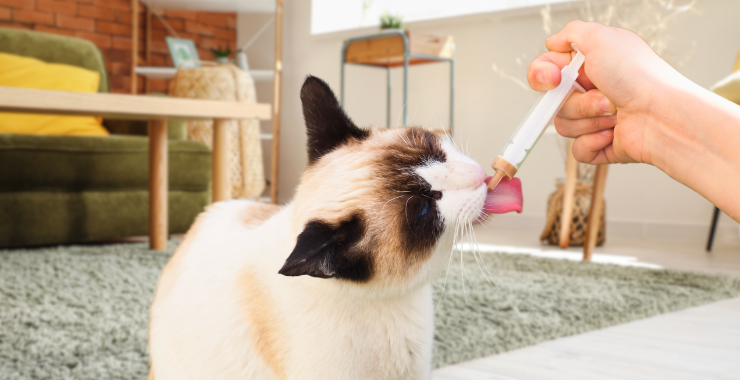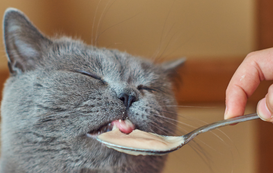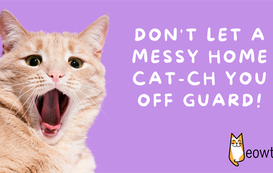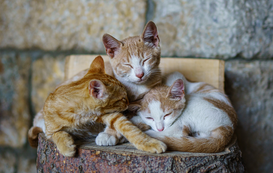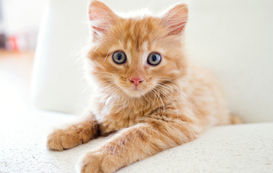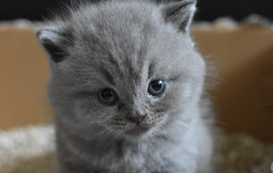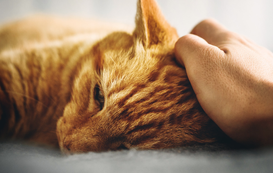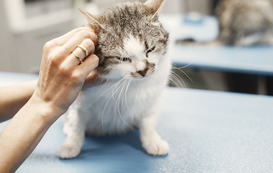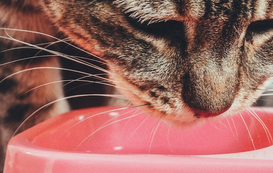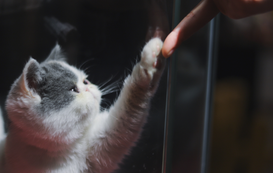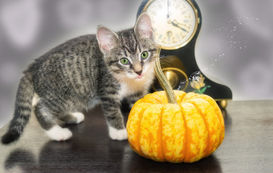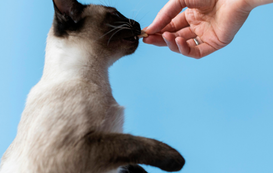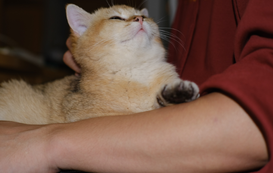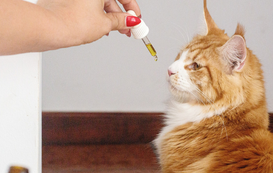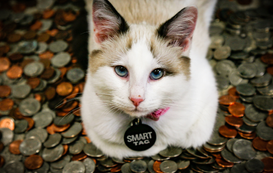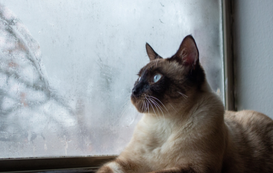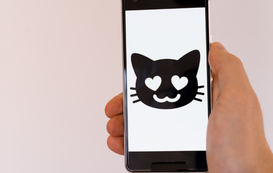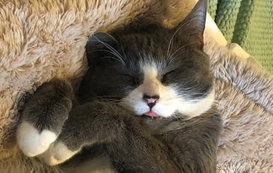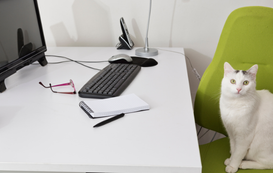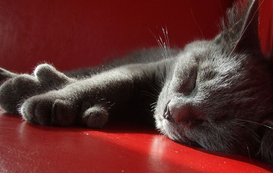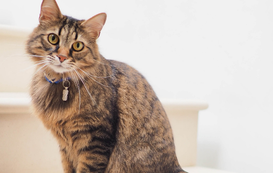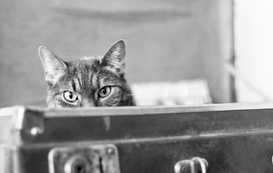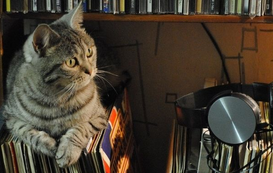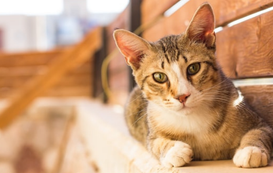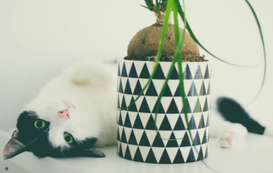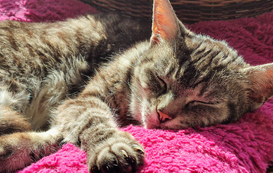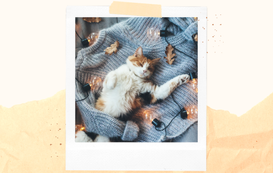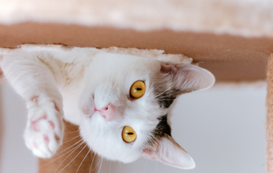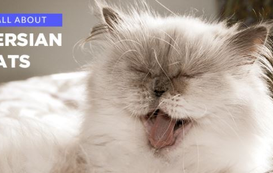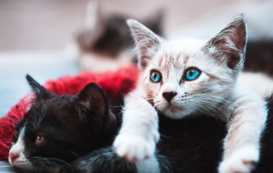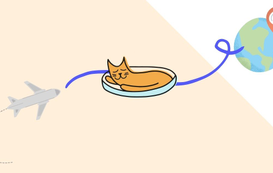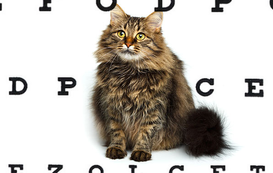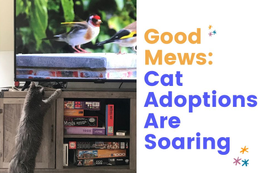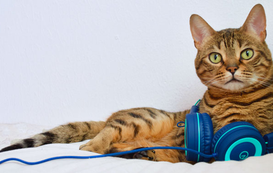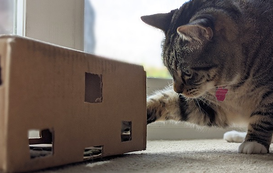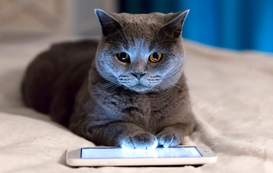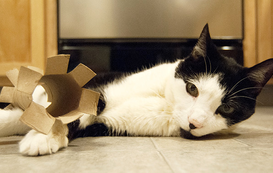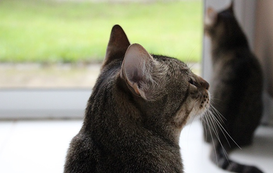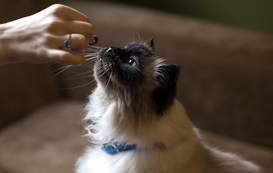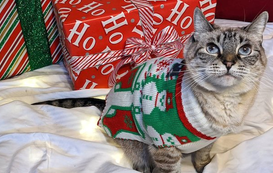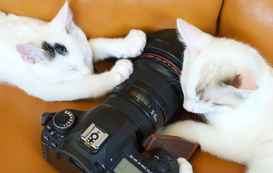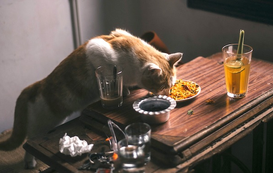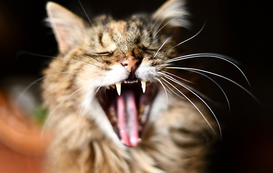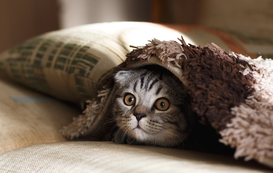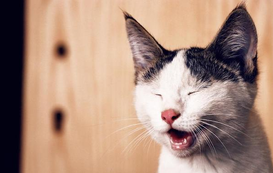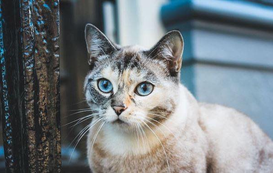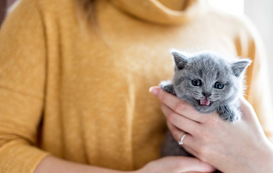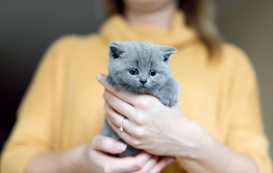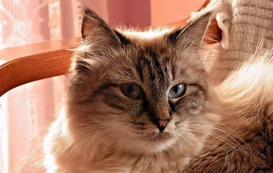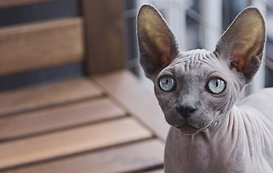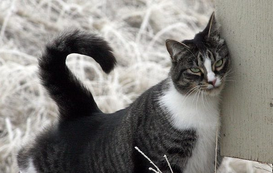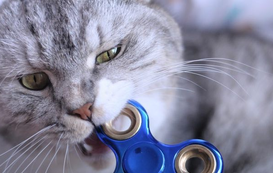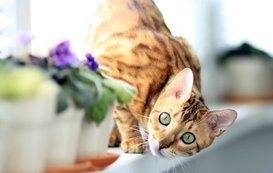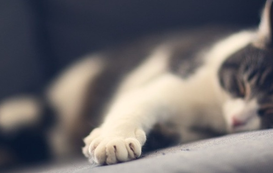Cat parents know that our cats are finicky, and finding just the right sitter fit for when we travel is essential. Going on vacation when one (or more) of our feline friends takes medication can add an additional level of challenge. We may worry that our cat will be unwilling to accept medication from a stranger. Or, if a kitty has a particularly complex medical situation, we may feel concern about our sitter getting every step of care just right.
But traveling when your cat has medical needs doesn’t have to be worrisome or difficult. All that’s required is a little preparation that involves your vet, your cat, and your sitter.
Find a sitter with medication experience…or teach the sitter you already have
When looking for a cat sitter that has the skill and bedside manner necessary to medicate your cat, you’ll want to consider their experience and any existing relationship with your cat.
If you’re looking for a new sitter, cat sitters on Meowtel indicate on their profiles if they have experience with different types of feline medical needs. This can include everything from eye ointments, ear drops, pills and liquids to asthma treatments, injectable medications like insulin, and subcutaneous fluids. Many sitters have this experience either from caring for their own cats, volunteering in cat rescue, or even having worked as a vet tech. Reaching out to a potential sitter to discuss your cat’s particular medication needs before booking can help you decide if they’re a match.
If you already have a sitter and your cat has new medical needs, ask your sitter how they feel about medicating your kitty. Your existing sitter may have experience you don’t know about. And if they don’t, be open to the possibility of teaching them new medication skills they may not be familiar with. Your cat will appreciate the familiar face, and if you’re able to medicate your cat, a feline-focused cat sitter will, in most cases, be able to acquire those same skills with your guidance.
Once you book your sitter, there are several other steps you’ll want to take to prepare for your time away.
Check-in with your vet
After booking your sitter, check in with your vet to make sure all your cat’s medications are up-to-date and that you have a big enough supply to comfortably cover the time you’re away. This is also a great time to ask your vet about dosing guidelines and techniques to help you and your sitter be as prepared as possible.
Questions you may want to ask are:
- Can the pills your cat takes be crushed? If pilling your cat is challenging, some sitters may want to try hiding the crushed pill in food or a cat parent-approved liquid treat. But not all medication works the same way and some pills won’t work correctly if crushed. Make sure you find out from your vet if cutting or crushing the pills your cat needs is acceptable.
- How precise does dosage timing need to be? Generally, vets will advise that medication be given in the same two hour window(s) each day, but just how much flexibility your kitty’s medication schedule has will vary based on prescription and purpose. Getting a firm answer on this topic from your vet, and conveying that information to your sitter as early as possible, will help your cat receive the very best care.
- How important is it that a medication be taken with/without food? Different medications have different requirements in this regard. Double checking if this is an issue on medications your cat takes will allow you to provide precise instructions to your cat sitter.
- How should a missed or partial dose be handled? As you almost certainly know, sometimes a cat will spit out some amount of a liquid medication or hide a pill in its cheek. If your sitter encounters a situation like this, what is the recommended course of action?
While at the office, let them know you have a trip coming up and you’ll be leaving your sitter with a vet authorization form in case of emergency, which Meowtel includes with every cat parent account. Ask if the office has any particular protocols that need to be followed around this. Additionally, this is a good time to see if they have any veterinary telemedicine services they recommend should your sitter have urgent (but not emergency) concerns and cannot reach you immediately.
Once you have the answer to these questions and your prescriptions are up to date, it’s time to create a medication guide for your cat sitter.
Create a medication guide for your sitter
Making sure your cat gets the correct medication, in the correct dose, at the correct time, means writing out a medication guide. This document should focus on clarity and redundancy to eliminate any potential for errors. A great way to do this is to find two ways to convey every piece of information.
For example, when I create a medication guide for my own cats, I describe each cat by name, color, and size. This ensures that my sitter has multiple ways to tell each cat apart and make sure the right medication goes in the right cat.
Cow Cat is the largest cat in the house. He is white with three black spots on his back.
Annie is the smallest cat in the house. She is white with five black spots on her back.
Mozzy is a gray tabby who is slightly smaller than Cow Cat.
Sis is a small cat. She is a gray tabby with white feet and a white mark on her nose.
Similarly, when I list medications, I describe those medications in multiple ways, always identifying the brand name on the bottle, the generic or scientific name of the medication (which may or may not be on the bottle), and a visual description of both the medication and its container.
PediaPred (Prednisone) is a clear liquid in a dark blue, slightly translucent bottle. It does not need to be refrigerated and is located on the counter next to the refrigerator.
Clavamox (Amoxicillin clavulanate) is a white liquid in a white bottle with an eyedropper top. It needs to be refrigerated and is kept on the top shelf of the refrigerator door.
Continue this type of redundant information when discussing which cat takes which medication in which dosage.
Cow Cat takes PediaPred once a day at 8pm. He receives .2mL of the solution in the bottle at this time. Please use the oral syringe kept next to the bottle; the dosage is marked with a red line on the syringe.
Mozzy takes his Clavamox twice a day at 8am and 8pm. He receives 1mL for each of the two doses. This dosage is marked with a black line on the eyedropper in the bottle.
Annie and Sis are not taking any medication right now.
Providing this type of redundancy can eliminate misunderstandings and gives your sitter an easy way to double-check that the right cat is getting the right medication in the right amount. These detailed instructions also mean that exact information is close at hand should your cat have an emergent medical issue that requires vet contact while you’re away.
For each medication your cat takes, you should also note potential side effects, such as if the medication causes extra salivation or might make your cat feel nauseated. This way your sitter can keep an eye out for these common issues without becoming more concerned than necessary.

How you organize your medication guide is up to you. Some cat parents create an information sheet for each cat that includes photos of the cat and its medications. Others create grids, check lists, and or text-based narratives.
Your medication guide should also include your vet’s contact information, contact information for any veterinary telemedicine services that you use, contact information for a veterinary poison control center, and contact for a local friend or family member who is familiar with your cats.
Do a medication-focused meet and greet
The meet and greet is an opportunity for your sitter and your cat to get used to each other around medication issues. For this reason, an in-person meet and greet is strongly recommended over a virtual one.
Ideally, this meet and greet will happen when you are administering the same medications your sitter will need to handle while you are away. This allows your sitter to see what techniques work for you and your cat and to discuss alternate techniques they might wish to try. This can also be an opportunity for your sitter to provide your cat’s medication under your supervision.
During a medication focused meet and greet, your cat should be given the opportunity to meet and sniff your sitter. Similarly, your sitter should be given the opportunity to handle your cat in the ways it will need to be handled to receive its medication.
This might include picking up your cat, touching the cat’s skin between the shoulder blades (a common location for insulin injections and subcutaneous fluids), or coaxing your kitty to open its mouth for an oral medication.
This is a crucial time for you to communicate about your cat’s likes and dislikes. Showing your cat that you trust and know the sitter will help make medication time flow more smoothly. You may also want to step out of the room briefly to allow your sitter to see how friendly your feline is when you aren’t supervising.
During the meet and greet you should walk your sitter through the medication guide document and indicate where and how that document will be available to them. Once again, redundancy is key. Providing a printed version of the document as well as a digital copy ensures that information will always be available even if a cell phone battery runs out or a glass of water gets spilled on the printed copy.
Finally, make sure you show your sitter where all medications for your cat are kept. Reinforce this information by encouraging them to take a photo of the area or by sending them one yourself.
Before Your Go
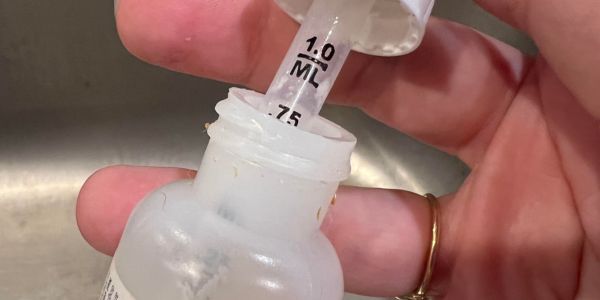
Look over your cat’s medications and make sure the bottles are clearly and correctly labeled (dosage amounts are up to date, text on labels is readable) and update those labels if necessary. Make sure the names on bottles continue to match those in your medication guide.
Make sure the medications are in the same location you shared with your sitter at the meet and greet. If that location has changed, send them an updated photograph and location description.
Contact your sitter before you depart to reconfirm upcoming kitty visits and let them know the most recent dose of medications your cat has received. This is also a good time to let them know if there’s any new concerns you want them to keep an eye on.
If you haven’t already, let your sitter know where your cat’s carrier is in case of emergency and double check that you have filled out your vet authorization form. If you are traveling to a different time zone or will have limited access to updates from your sitter, be sure to let them know this and provide guidelines on how they should approach non-emergency questions or concerns.
For peace of mind, you can also ask your sitter to confirm which cat received which medication and dosage in the update they provide with every visit.
While you’re away
Now it’s time to enjoy your trip, knowing that your cat is enjoying time with a caring sitter who will send you regular updates.
Preparing for your return
When it’s time to return home to your feline friends, double check that your scheduled transportation is running on time and encourage your sitter to hold onto your key until you confirm that you have arrived home. In the event of significant delays, this will allow you to contact your sitter to schedule an additional visit so that no medication doses are missed.
Following Up
Once you're back with your cats, consider reaching out to your sitter to get feedback on your cat’s behavior and the techniques your sitter used to administer medication. This information will be valuable for future trips and may even help you try new approaches to increase kitty comfort!
If your cat sitter on Meowtel did an exceptional job with keeping track of medication schedules and administration while you were away, you can show them your appreciation by leaving a 5-star review and sending a tip their way. Sitters on Meowtel keep 100% of their tips, but more importantly, receiving the feedback that they kept your kitties safe and healthy while you were away will make their day!

